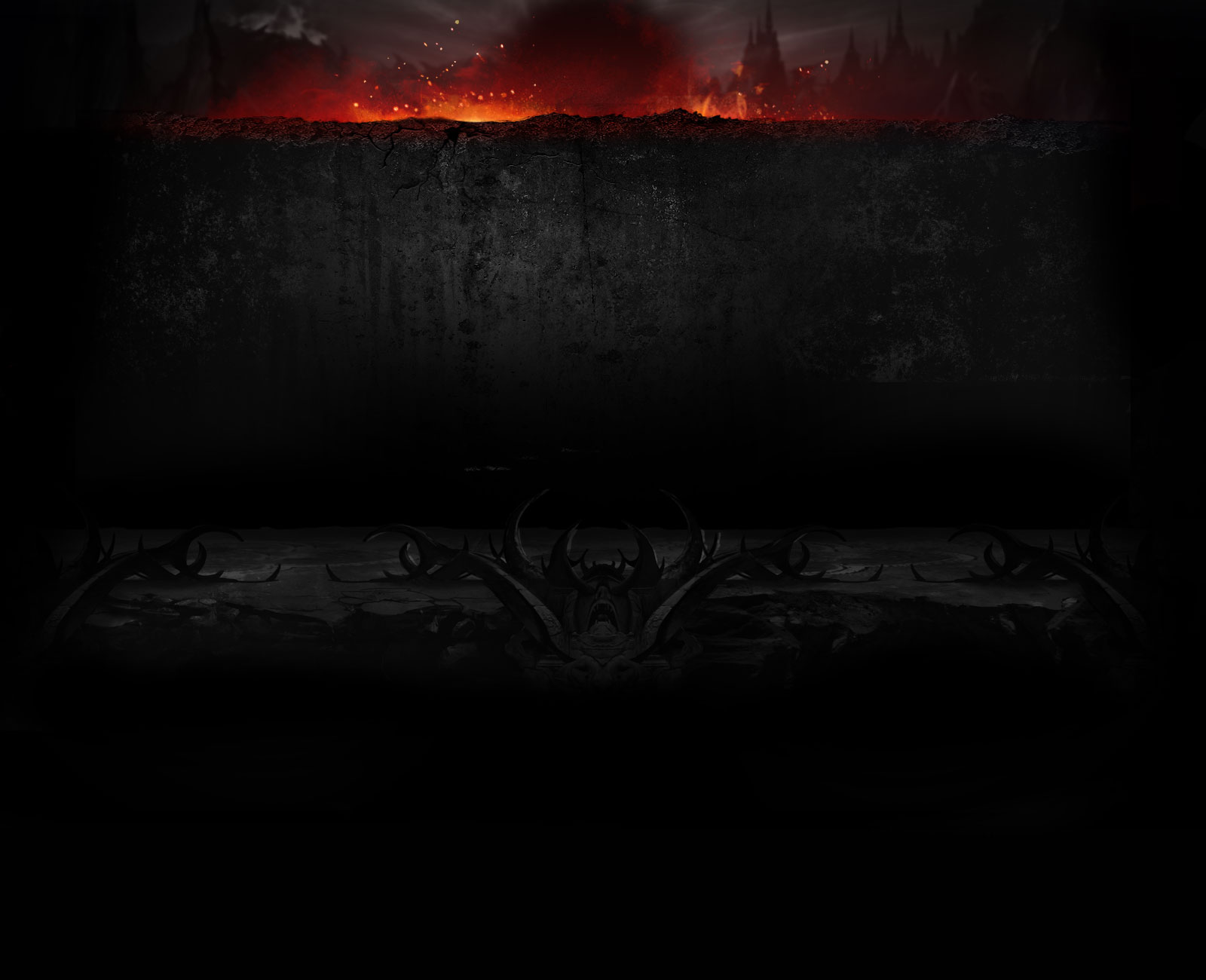TarkatanDentist
Kombatant
In recent times the debate over same-sex marriage has flared up once again. Now, in my time I’ve done a lot of thinking about LGBTQ matters, including, among other things, how LGBTQ people are often portrayed in the media and, needless to say, there are many gripes that I have in that regard, especially when it comes to the portrayal of transgendered people.
The main ones:
1) The over-simplification of the ‘transition’ process. As a general rule, unless the film/book/program in question specifically revolves around a transgendered character realising their true gender, and the steps that follow in order to be accepted by society, there is a tendency for works featuring a transgendered character to grossly over-simplify ‘transition’, almost always by focusing primarily or exclusively on genital reassignment surgery (what most would call a ‘sex change operation’). Hence why questions like ‘is she pre-op or post-op?’ are likely to appear.
In other words, there is no real ‘transition’ shown, so to speak. Never mind how long it takes real-life transgendered people to accept themselves, and eventually come out to others about how they feel. Never mind that they then have to go through months of therapy before being allowed to begin hormone treatment, with the hormones themselves taking several years to come into full effect (in simplistic terms, imagine going through a second puberty). Never mind that they then have to prove they can live and function in society as their true gender for at least a year (or longer depending on which country we’re talking about) before then being put on a waiting list for the operation itself. Nope, in magical TV-land, Paul can walk into the surgery, and a few hours later he comes out as Pauline, complete with boobs, a more ‘lady-like’ figure and a feminine voice.
In fact, not all transgendered people in the real world even want to undergo a ‘sex change’ operation - many choose not to, happy to express their gender without the need to change their genitals in the process. And even if they do want to, many of them cannot due to any number of reasons (e.g. not having enough money). Ultimately, putting such a huge focus on what is ultimately just ONE part of the transition process devalues the transition process as a whole, and can lead to those who haven’t had the operation as not being considered ‘real’ men or women.
Oh, and you can absolutely forget about non-binary transgendered people being portrayed at all. Gender in TV-land is strictly limited to ‘man’ and ‘woman’.
2) On the subject of transgendered people, it’s interesting to note that the vast majority of transsexuals shown in media are trans women – trans men rarely seem to get much of a look-in. In some cultures, where women are effectively treated as second-class citizens, this is because the idea of someone born male wanting to be recognised as a woman seems ridiculous, whereas someone born female wanting to be recognised as a man is seen as trying to acquire ‘male privilege’ for themselves, and dealt with accordingly.
Even in more tolerant countries (that said, there are FAR too many cases of sexism against both men AND women everywhere in the world, but that discussion is for another time…), males who identify as women are seen as more ‘shocking’ with regards to cultural and societal norms. It’s far too common to hear people deride trans women as ‘men who wear dresses’, once again ignoring the many other aspects to transitioning. After all, society may have accepted women wearing what was traditionally seen as ‘men’s clothing’, but god forbid if a man decides to wear a dress or a skirt. This gives off the impression that the number of trans women is much higher than the number of trans men, when in reality there is no statistically significant difference between them.
This is not just limited to transgendered people. In a similar fashion, gay men receive considerably more media coverage than lesbians do. Much more scientific research has been done into the nature of male homosexuality than female homosexuality. This in itself relates to how women in general are portrayed as compared to men, but as I’ve said before, that discussion is best had at a later date…
3) In recent times, there have been more same-sex couples portrayed in media. This is great, of course, but there seem to be many double standards with relation to how they’re portrayed compared to opposite-sex couples. For a start, there never really seem to, well, do anything you’d expect a couple to do (on-screen, at any rate). The occasional kiss or romantic date will rarely be shown or even mentioned, and at worst they won’t even so much as hold hands. In effect, they end up looking more like two good friends rather than a romantic couple. Remember kids – it’s OK to be a gay couple in TV-land just so long as they don’t act like a couple.
N.B. The above only applies if the couple in question consists of two men. If it’s two women then the above rules get completely chucked out of the window. After all, a very large portion of media is written by heterosexual men, and girl-on-girl is hot, right? Never mind that you’re denigrating the women in question into meaningless sex objects with that statement. In effect, what happens is that whoever wrote the show/film/book etc. is perfectly comfortable with writing about two women being intimate, but is deeply uncomfortable with writing about two men being intimate – what if viewers start calling their sexuality into question? How could they bear such a scandal?
In fact, that’s exactly why there’s so much lesbian porn out there – because there are guys out there who are genuinely so insecure about their sexuality that the idea of being aroused by a man fucking a woman terrifying. “Oh no, what if I’m not going aroused by her vagina – what if I’m actually getting off to his dick?!”
4) This point ultimately applies to minority groups in general, not just LGBTQ people. Essentially, if one ‘token’ character is included in the main cast (said person may be the only female main character, or they might be of a certain racial group, but in this instance I’ll be talking about LGBTQ characters), there is a considerable tendency for said character to be overwhelmingly talented and have next to no real flaws. Such a character will always be right, and will hardly ever do any wrong. Hopefully not quite to Mary Sue extremes, but having a character, any character, who is too perfect just doesn’t seem right.
One key rule of any form of media is that balanced characters need valid flaws. And not trivial stuff like “is a terrible singer” which will rarely if ever have any impact on the storyline. Actual flaws – be that stubbornness, shyness, inflated ego, being slightly dim-witted etc. By portraying a minority character as being ‘above’ these flaws, a different sort of prejudice altogether is being encouraged. Since they don’t have ‘human’ flaws and inadequacies, how can they be said to be able to reflect upon real people who are members of said minority group? People may begin to resent the character, not because of the minority group they are a part of, but simply because said character is NOT well-balanced.
This particular one, as well-intentioned as it is, ultimately does no minority group (and in particular the LGBTQ community) any favours.
5) OK, this one in particular really, really bugs me – where are all the bisexuals? Seriously – when it comes to soap operas or any other sort of drama, it seems that if someone has previously dated people of the opposite gender, and is now shown as being attracted to the same gender, they will lose their attraction to the opposite gender completely and fully embrace their ‘gay’ identity. In TV-land, apparently sexuality is a binary – you’re either straight or you’re gay. Period.
Assuming a show DOES feature a bisexual character, said character is disproportionately represented as being sex-crazy and willing to do anyone, whilst remaining completely incapable of holding down a monogamous relationship. Of course, there is a tendency for gay men to be portrayed in this way as well, but it’s especially the case for bisexual characters. This is roughly equivalent to saying that if a heterosexual man is attracted to both blonde and brunette women, he is incapable of holding down a monogamous relationship with a brunette woman. Being attracted to both genders does NOT mean that someone will be attracted to EVERYONE from both genders/ Of course, promiscuous bisexual people DO exist in the real world – so do promiscuous heterosexual and homosexual people.
6) But when all is said and done, what many people fail to realise is that people who are LGBTQ vary just as much with regards to personality, interests, lifestyle etc. as heterosexual people do. And while there are certainly more LGBTQ people being represented now than there were even ten years ago, there’s one key problem that continues to persist and is unfortunately likely to continue: if a show/film/book includes a protagonist that is gay, for example, you can be 99% sure that the plot will revolve around their sexuality, or at the very least it will be a major plot point.
The same applies to transgendered characters – if they’re a major character, there will almost always be a huge focus on how they live as their ‘new’ gender, how people react etc. And of course, this isn’t necessarily a bad thing. There have been many excellent works with regards to someone’s transitioning, or coming to terms with their sexuality and finding happiness, but if these are the ONLY works featuring LGBTQ protagonists that get made, it gives off the impression of gay/bisexual characters being defined ONLY by their sexuality, or transgendered characters being defined ONLY by their gender.
Why would it be so difficult for, say, a cheesy rom-com to feature a trans woman and her boyfriend, or for an action-packed adventure movie to feature a female protagonist who just so happens to be a lesbian, or for a children’s movie to star a teacher who wants to stop the school from being closed down, a teacher who just so happens to swing both ways? Why must their sexuality or gender identity always play a huge part of the film they appear in?
At the end of the day, LGBTQ people are people just like anyone else. They have hobbies and interests just like anyone else. They have emotions like anyone else. They want to be happy, just like anyone else. It’s just that they’ve had to contemplate their own identity whilst growing up a lot more on average than cisgendered and heterosexual people do.
There are many, many, many more things I could say here, but I think I’d better stop now. Overall, if same-sex marriage is legalised (and in the case of the UK at least, they’ve already said that they plan to have it legalised by 2015), that would be an excellent step in the right direction, but there is still a long, long way to go if we want to get away from the heteronormativity that pervades every aspect of society.
The main ones:
1) The over-simplification of the ‘transition’ process. As a general rule, unless the film/book/program in question specifically revolves around a transgendered character realising their true gender, and the steps that follow in order to be accepted by society, there is a tendency for works featuring a transgendered character to grossly over-simplify ‘transition’, almost always by focusing primarily or exclusively on genital reassignment surgery (what most would call a ‘sex change operation’). Hence why questions like ‘is she pre-op or post-op?’ are likely to appear.
In other words, there is no real ‘transition’ shown, so to speak. Never mind how long it takes real-life transgendered people to accept themselves, and eventually come out to others about how they feel. Never mind that they then have to go through months of therapy before being allowed to begin hormone treatment, with the hormones themselves taking several years to come into full effect (in simplistic terms, imagine going through a second puberty). Never mind that they then have to prove they can live and function in society as their true gender for at least a year (or longer depending on which country we’re talking about) before then being put on a waiting list for the operation itself. Nope, in magical TV-land, Paul can walk into the surgery, and a few hours later he comes out as Pauline, complete with boobs, a more ‘lady-like’ figure and a feminine voice.
In fact, not all transgendered people in the real world even want to undergo a ‘sex change’ operation - many choose not to, happy to express their gender without the need to change their genitals in the process. And even if they do want to, many of them cannot due to any number of reasons (e.g. not having enough money). Ultimately, putting such a huge focus on what is ultimately just ONE part of the transition process devalues the transition process as a whole, and can lead to those who haven’t had the operation as not being considered ‘real’ men or women.
Oh, and you can absolutely forget about non-binary transgendered people being portrayed at all. Gender in TV-land is strictly limited to ‘man’ and ‘woman’.
2) On the subject of transgendered people, it’s interesting to note that the vast majority of transsexuals shown in media are trans women – trans men rarely seem to get much of a look-in. In some cultures, where women are effectively treated as second-class citizens, this is because the idea of someone born male wanting to be recognised as a woman seems ridiculous, whereas someone born female wanting to be recognised as a man is seen as trying to acquire ‘male privilege’ for themselves, and dealt with accordingly.
Even in more tolerant countries (that said, there are FAR too many cases of sexism against both men AND women everywhere in the world, but that discussion is for another time…), males who identify as women are seen as more ‘shocking’ with regards to cultural and societal norms. It’s far too common to hear people deride trans women as ‘men who wear dresses’, once again ignoring the many other aspects to transitioning. After all, society may have accepted women wearing what was traditionally seen as ‘men’s clothing’, but god forbid if a man decides to wear a dress or a skirt. This gives off the impression that the number of trans women is much higher than the number of trans men, when in reality there is no statistically significant difference between them.
This is not just limited to transgendered people. In a similar fashion, gay men receive considerably more media coverage than lesbians do. Much more scientific research has been done into the nature of male homosexuality than female homosexuality. This in itself relates to how women in general are portrayed as compared to men, but as I’ve said before, that discussion is best had at a later date…
3) In recent times, there have been more same-sex couples portrayed in media. This is great, of course, but there seem to be many double standards with relation to how they’re portrayed compared to opposite-sex couples. For a start, there never really seem to, well, do anything you’d expect a couple to do (on-screen, at any rate). The occasional kiss or romantic date will rarely be shown or even mentioned, and at worst they won’t even so much as hold hands. In effect, they end up looking more like two good friends rather than a romantic couple. Remember kids – it’s OK to be a gay couple in TV-land just so long as they don’t act like a couple.
N.B. The above only applies if the couple in question consists of two men. If it’s two women then the above rules get completely chucked out of the window. After all, a very large portion of media is written by heterosexual men, and girl-on-girl is hot, right? Never mind that you’re denigrating the women in question into meaningless sex objects with that statement. In effect, what happens is that whoever wrote the show/film/book etc. is perfectly comfortable with writing about two women being intimate, but is deeply uncomfortable with writing about two men being intimate – what if viewers start calling their sexuality into question? How could they bear such a scandal?
In fact, that’s exactly why there’s so much lesbian porn out there – because there are guys out there who are genuinely so insecure about their sexuality that the idea of being aroused by a man fucking a woman terrifying. “Oh no, what if I’m not going aroused by her vagina – what if I’m actually getting off to his dick?!”
4) This point ultimately applies to minority groups in general, not just LGBTQ people. Essentially, if one ‘token’ character is included in the main cast (said person may be the only female main character, or they might be of a certain racial group, but in this instance I’ll be talking about LGBTQ characters), there is a considerable tendency for said character to be overwhelmingly talented and have next to no real flaws. Such a character will always be right, and will hardly ever do any wrong. Hopefully not quite to Mary Sue extremes, but having a character, any character, who is too perfect just doesn’t seem right.
One key rule of any form of media is that balanced characters need valid flaws. And not trivial stuff like “is a terrible singer” which will rarely if ever have any impact on the storyline. Actual flaws – be that stubbornness, shyness, inflated ego, being slightly dim-witted etc. By portraying a minority character as being ‘above’ these flaws, a different sort of prejudice altogether is being encouraged. Since they don’t have ‘human’ flaws and inadequacies, how can they be said to be able to reflect upon real people who are members of said minority group? People may begin to resent the character, not because of the minority group they are a part of, but simply because said character is NOT well-balanced.
This particular one, as well-intentioned as it is, ultimately does no minority group (and in particular the LGBTQ community) any favours.
5) OK, this one in particular really, really bugs me – where are all the bisexuals? Seriously – when it comes to soap operas or any other sort of drama, it seems that if someone has previously dated people of the opposite gender, and is now shown as being attracted to the same gender, they will lose their attraction to the opposite gender completely and fully embrace their ‘gay’ identity. In TV-land, apparently sexuality is a binary – you’re either straight or you’re gay. Period.
Assuming a show DOES feature a bisexual character, said character is disproportionately represented as being sex-crazy and willing to do anyone, whilst remaining completely incapable of holding down a monogamous relationship. Of course, there is a tendency for gay men to be portrayed in this way as well, but it’s especially the case for bisexual characters. This is roughly equivalent to saying that if a heterosexual man is attracted to both blonde and brunette women, he is incapable of holding down a monogamous relationship with a brunette woman. Being attracted to both genders does NOT mean that someone will be attracted to EVERYONE from both genders/ Of course, promiscuous bisexual people DO exist in the real world – so do promiscuous heterosexual and homosexual people.
6) But when all is said and done, what many people fail to realise is that people who are LGBTQ vary just as much with regards to personality, interests, lifestyle etc. as heterosexual people do. And while there are certainly more LGBTQ people being represented now than there were even ten years ago, there’s one key problem that continues to persist and is unfortunately likely to continue: if a show/film/book includes a protagonist that is gay, for example, you can be 99% sure that the plot will revolve around their sexuality, or at the very least it will be a major plot point.
The same applies to transgendered characters – if they’re a major character, there will almost always be a huge focus on how they live as their ‘new’ gender, how people react etc. And of course, this isn’t necessarily a bad thing. There have been many excellent works with regards to someone’s transitioning, or coming to terms with their sexuality and finding happiness, but if these are the ONLY works featuring LGBTQ protagonists that get made, it gives off the impression of gay/bisexual characters being defined ONLY by their sexuality, or transgendered characters being defined ONLY by their gender.
Why would it be so difficult for, say, a cheesy rom-com to feature a trans woman and her boyfriend, or for an action-packed adventure movie to feature a female protagonist who just so happens to be a lesbian, or for a children’s movie to star a teacher who wants to stop the school from being closed down, a teacher who just so happens to swing both ways? Why must their sexuality or gender identity always play a huge part of the film they appear in?
At the end of the day, LGBTQ people are people just like anyone else. They have hobbies and interests just like anyone else. They have emotions like anyone else. They want to be happy, just like anyone else. It’s just that they’ve had to contemplate their own identity whilst growing up a lot more on average than cisgendered and heterosexual people do.
There are many, many, many more things I could say here, but I think I’d better stop now. Overall, if same-sex marriage is legalised (and in the case of the UK at least, they’ve already said that they plan to have it legalised by 2015), that would be an excellent step in the right direction, but there is still a long, long way to go if we want to get away from the heteronormativity that pervades every aspect of society.






